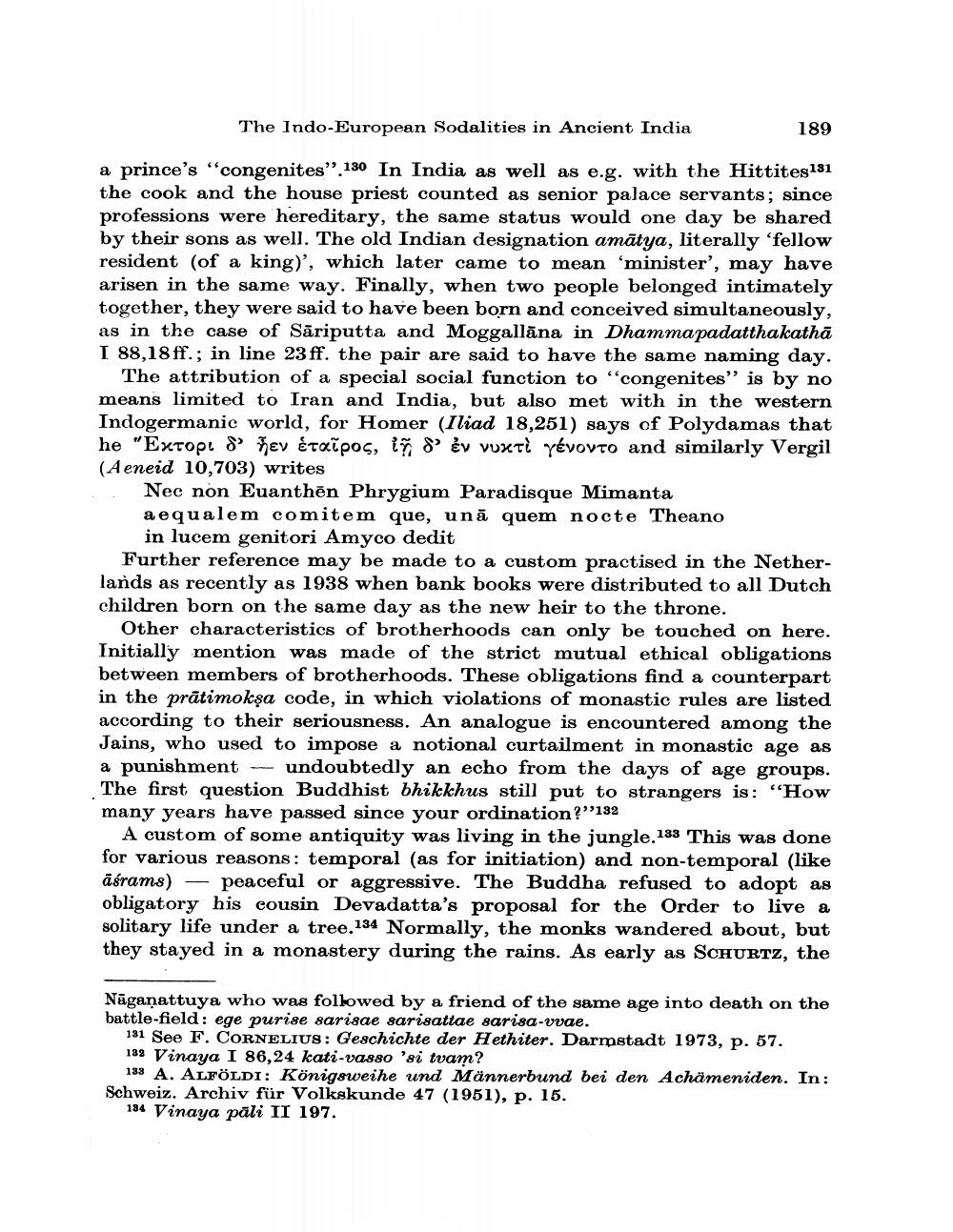________________
The Indo-European Sodalities in Ancient India
189
a prince's “congenites". 130 In India as well as e.g. with the Hittites181 the cook and the house priest counted as senior palace servants; since professions were hereditary, the same status would one day be shared by their sons as well. The old Indian designation amātya, literally 'fellow resident (of a king)', which later came to mean 'minister', may have arisen in the same way. Finally, when two people belonged intimately together, they were said to have been born and conceived simultaneously, as in the case of Sāriputta and Moggallāna in Dhammapadatthakathā I 88,18 ff.; in line 23ff. the pair are said to have the same naming day.
The attribution of a special social function to "congenites” is by no means limited to Iran and India, but also met with in the western Indogermanic world, for Homer (Iliad 18,251) says of Polydamas that he "Extope hev étaipos, is d'év vuxti yévovto and similarly Vergil (Aeneid 10,703) writes
Nec non Euanthēn Phrygium Paradisque Mimanta a equalem comitem que, unā quem nocte Theano
in lucem genitori Amyco dedit Further reference may be made to a custom practised in the Netherlands as recently as 1938 when bank books were distributed to all Dutch children born on the same day as the new heir to the throne.
Other characteristics of brotherhoods can only be touched on here. Initially mention was made of the strict mutual ethical obligations between members of brotherhoods. These obligations find a counterpart in the prātimokşa code, in which violations of monastic rules are listed according to their seriousness. An analogue is encountered among the Jains, who used to impose a notional curtailment in monastic age as a punishment - undoubtedly an echo from the days of age groups. The first question Buddhist bhikkhus still put to strangers is: "How many years have passed since your ordination?”132
A custom of some antiquity was living in the jungle. 133 This was done for various reasons: temporal (as for initiation) and non-temporal (like āśrams) — peaceful or aggressive. The Buddha refused to adopt as obligatory his cousin Devadatta's proposal for the Order to live a solitary life under a tree. 134 Normally, the monks wandered about, but they stayed in a monastery during the rains. As early as SCHURTZ, the
Nāganattuya who was followed by a friend of the same age into death on the battle-field: ege purise sarisae sarisattae sarisa-vvae.
181 See F. CORNELIUS: Geschichte der Hethiter. Darmstadt 1973, p. 57. 132 Vinaya I 86,24 kati-vasso 'si tvam?
133 A. ALFÖLDI: Königsweihe und Männerbund bei den Achämeniden. In: Schweiz. Archiv für Volkskunde 47 (1951), p. 15.
194 Vinaya päli II 197.




